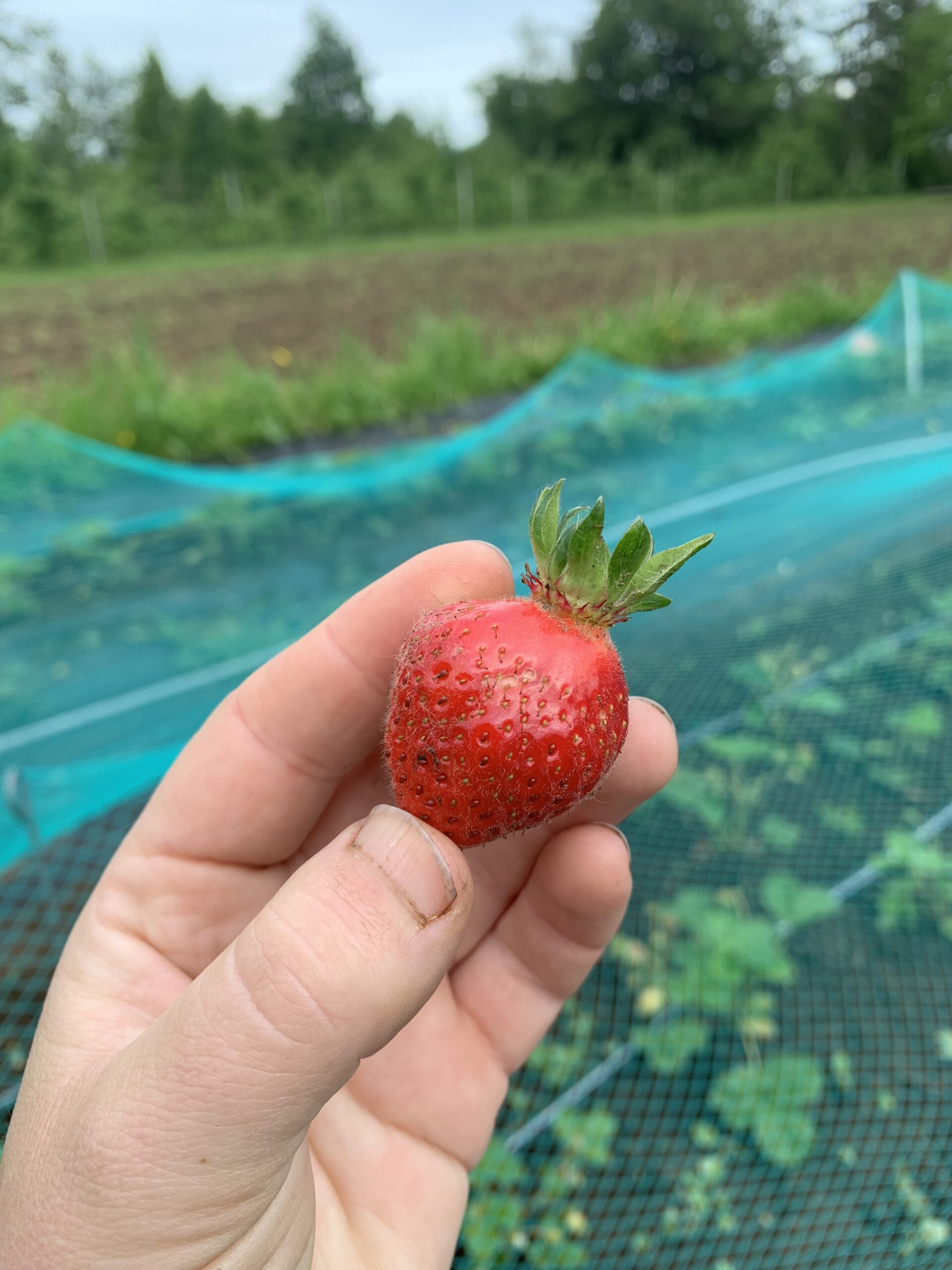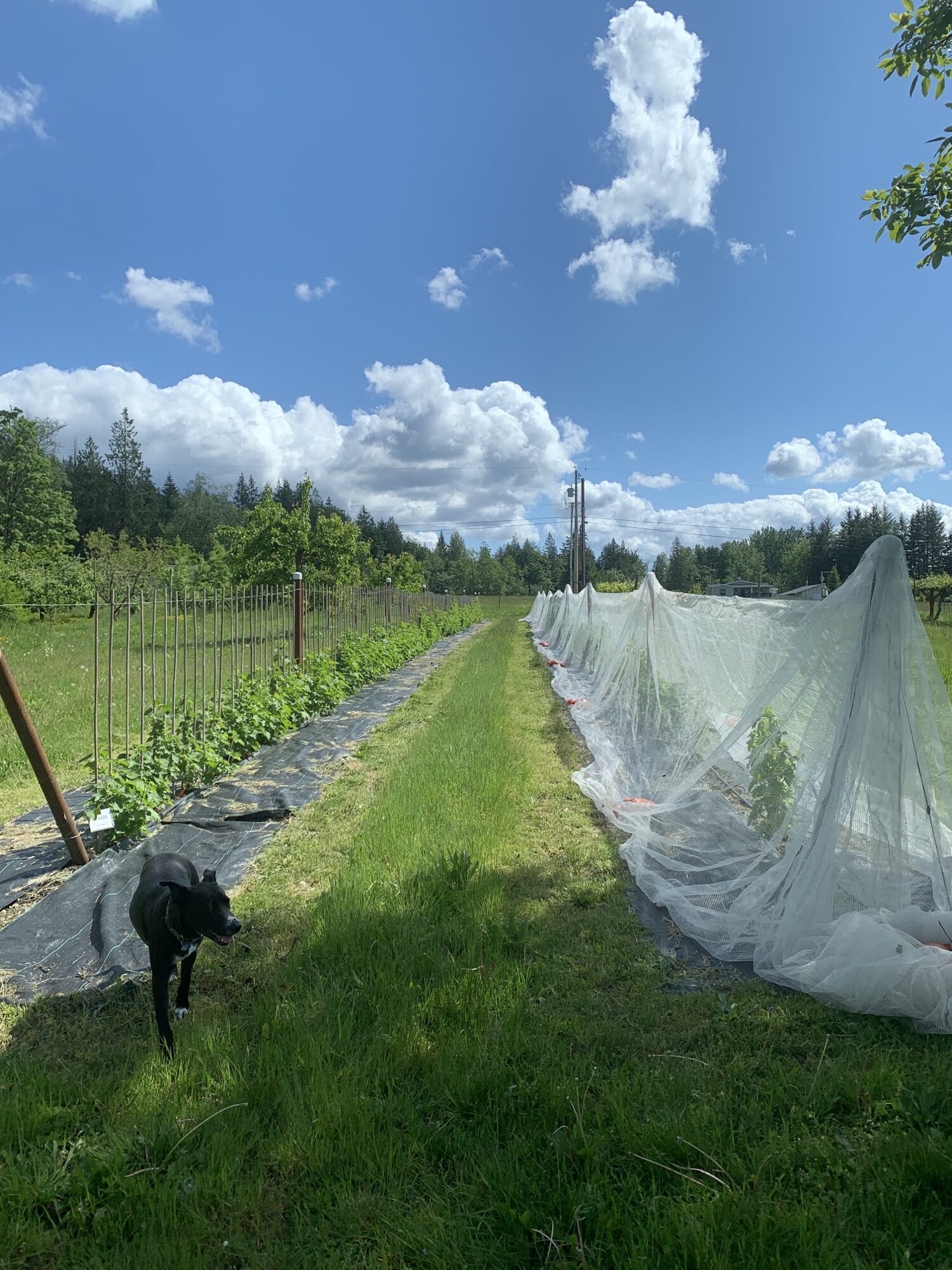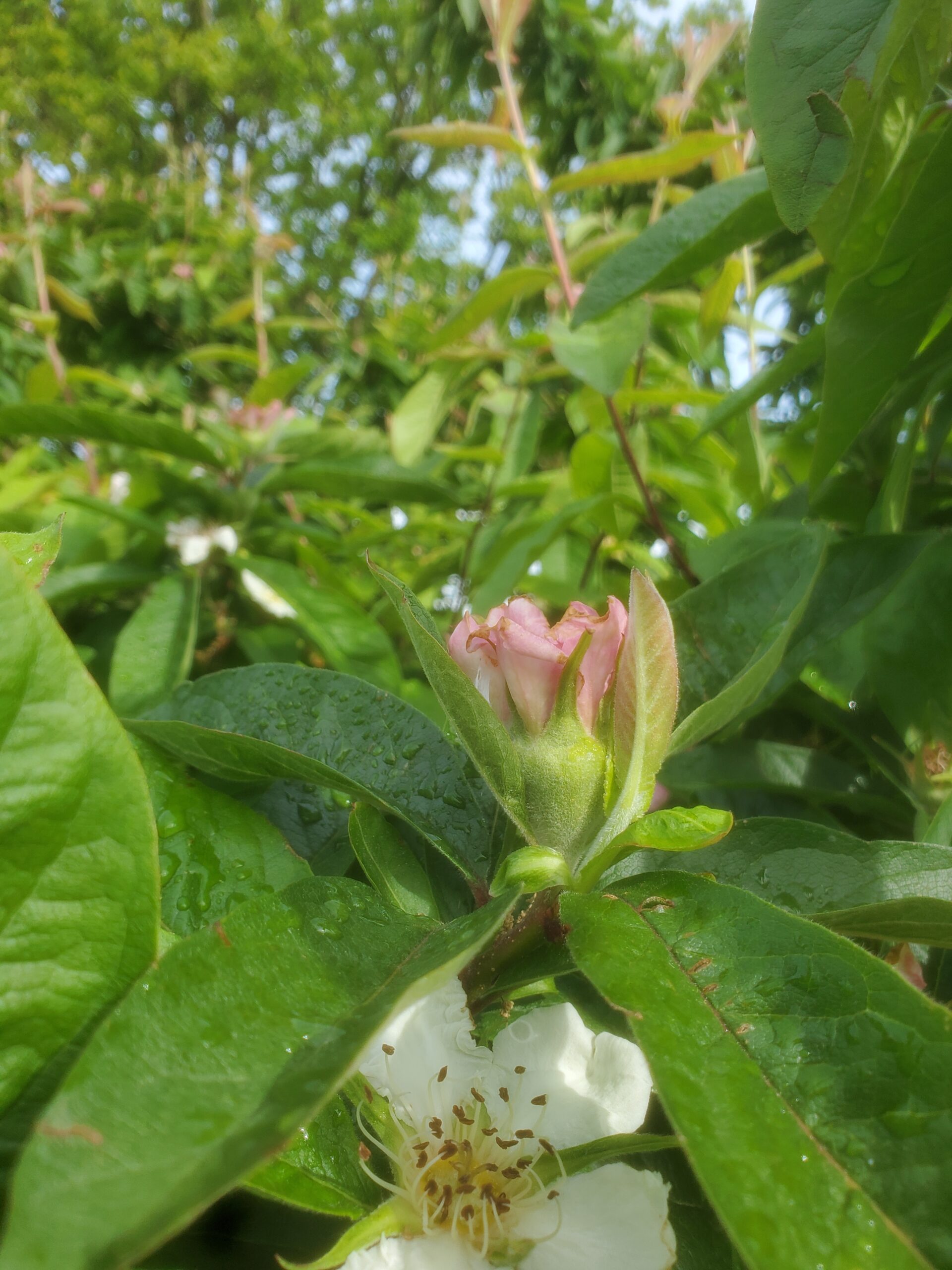
First red strawberry off our June-Bearers
This week we’re back in the prolonged PNW spring with plenty of rain holding off the need to irrigate. We started this early spring about 2 weeks ahead of last year in terms of tree development and degree days, but the cool conditions have slowed things down such that we’re at about the same stage, or a little behind where things were at this time last year. This week getting the grass under control, spraying for codling moth eggs, thinning fruit and troubleshooting hydromulch are the main priorities.
Fruit/Bud/Tree Development
- Strawberries are beginning to ripen! We’re expecting to get it for a first pick next week. Hard to say exactly how large the crop will be. Many of the strawberries were somewhat set back by losing irrigation late last summer, but they’ve made a decent comeback.
- We have the first signs of cover crop germination in the fields we’re prepping for next year. A good amount of rain in the coming week will hopefully help us establish a nice stand of cover crop to help us build soil for next year’s planting. (We just placed an order for over 200 more apples to plant in the front with more orders in the works!)
- Now is the time for fruit thinning. Fruit thinning is becoming a high priority because early thinning is important for determining the potential for the fruit to size up this year, produce nicely next year and ensure good coverage of upcoming sprays.
Pest & Disease
- Codling moth sprays begin this week. The first spray (we use the “no biofix” model on uspest.org) is uses a summer spray oil to smother codling moth eggs before they’re expected to start hatching (later this week). Codling moth is perhaps our single biggest IPM challenge as an organic orchard. Ideally in the future we will replace this CM spray program with netting—none of our organic spray options really meet the mark for excellent control of this troublesome moth.
- Aphids and powdery mildew are showing up on apples this year as we’ve mentioned in the past. The oil spray for codling moth should also have some efficacy in controlling these pest and disease issues.
- Throwing in a beneficial insect observation: We’ve gone to inspect leaves showing the signs of aphid feeding multiple times this spring and found a ladybug hanging out eating its fill of aphids. It’s always a good sign to catch instances of natural pest control at work.

Covering our Ribes to keep currant worm and gooseberry maggot out

Bloom ends, and fruit set begins on the lovely Medlar

